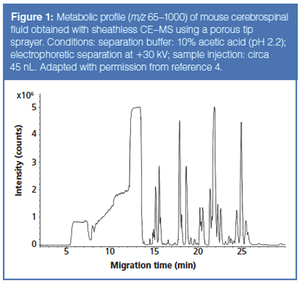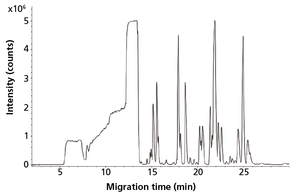
Rawi Ramautar discusses capillary electrophoresis–mass spectrometry for metabolomics and previews the topic for HPLC 2019.

Rawi Ramautar discusses capillary electrophoresis–mass spectrometry for metabolomics and previews the topic for HPLC 2019.

This is the second in a series of articles exploring current topics in separation science that will be addressed at the HPLC 2019 conference in Milan, Italy, from 16–20 June.

In this HPLC 2019 topic preview, Rawi Ramautar discusses capillary electrophoresis–mass spectrometry (CE–MS) for metabolomics and why the technique can help researchers overcome the issues which arise from low amounts of material. HPLC 2019 conference will be held in Milan, Italy, from 16–20 June.

Recent advances have significantly improved the performance of capillary electrophoresis–mass spectrometry (CE–MS) for the profiling of polar and charged metabolites in volume-restricted or mass-limited biological samples. Here, those advances are discussed, and attention is also devoted to various technical aspects that still need to be addressed.

The analytical toolbox used in present-day metabolomics encounters difficulties for the analysis of limited amounts of biological samples. Therefore, a significant number of crucial biomedical and clinical questions cannot be addressed by the current metabolomics approach. Capillary electrophoresis–mass spectrometry (CE–MS) has shown considerable potential for the profiling of polar and charged metabolites in volume-restricted or mass-limited biological samples. This article considers advances that significantly improved the performance of CE–MS for in-depth metabolic profiling of limited sample amounts. Attention is also devoted to various technical aspects that still need to be addressed to make CE–MS a viable approach for volume-restricted metabolomics.

Inspired by the work of Jorgenson and Lukacs, 30 years ago, the group of Richard Smith at Pacific Northwest National Laboratory in Washington (USA) reported the first online coupling of the microscale separation technique capillary electrophoresis (CE) to electrospray ionization (ESI) mass spectrometry (MS) using a sheath-liquid interface.

Published: November 1st 2017 | Updated:

Published: December 1st 2017 | Updated:

Published: May 1st 2018 | Updated:

Published: April 1st 2019 | Updated:

Published: May 8th 2019 | Updated:

Published: June 1st 2019 | Updated: